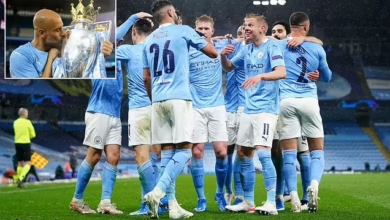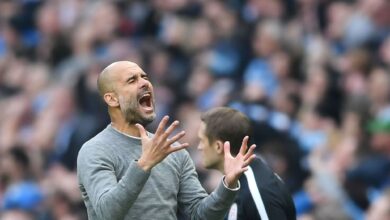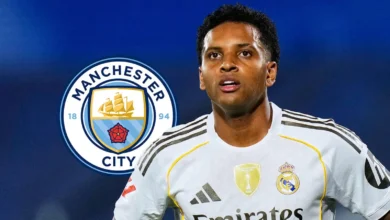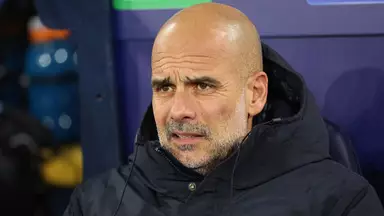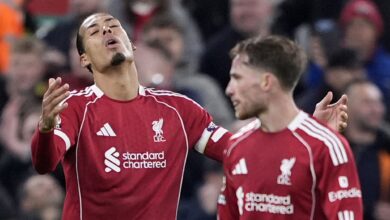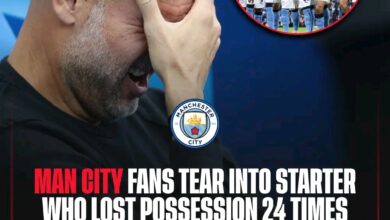Man City Place £25M Price Tag On Midfielder Who Guardiola Has Described As “Incredible”
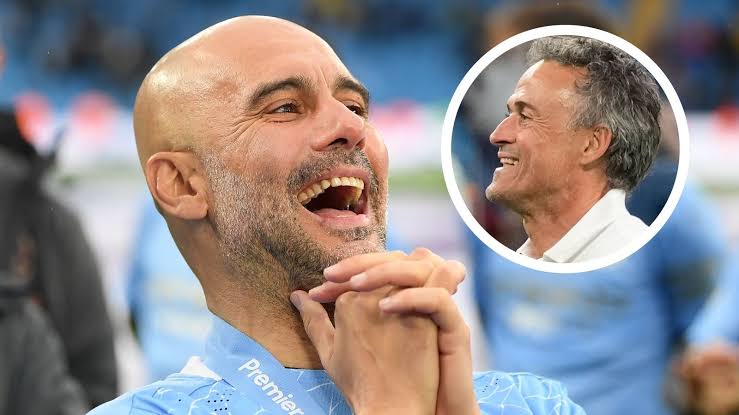
The world of football transfers is often characterized by complex negotiations, strategic decisions, and the delicate balance between nurturing talent and achieving immediate success. Manchester City’s recent decision to place a £25 million price tag on midfielder James McAtee represents a fascinating case study in modern football economics and squad management. This move, which has captured the attention of clubs across Europe’s top leagues, reflects the challenging realities facing even the most successful football clubs when it comes to developing and retaining homegrown talent.
James McAtee, a 22-year-old midfielder who has been described by Pep Guardiola as “incredible,” finds himself at the center of a transfer saga that highlights the competitive nature of Manchester City’s squad and the difficult choices that must be made when managing a roster filled with world-class talent. The decision to potentially sell McAtee for between £20 million and £25 million, as reported by renowned transfer journalist Fabrizio Romano, represents more than just a simple business transaction; it embodies the complex dynamics of modern football club management.
The Rise of James McAtee
James McAtee’s journey through Manchester City’s academy system represents one of the most promising success stories in recent years. Born and raised in the Manchester area, McAtee has been with the club since childhood, progressing through every level of the youth system with remarkable consistency and skill. His development within the City Football Academy has been nothing short of exemplary, showcasing the kind of technical ability and football intelligence that the club’s coaching staff prize above all else.
McAtee’s playing style reflects the philosophical approach that has made Manchester City one of the most attractive teams to watch in world football. His ability to find space in congested areas, his precise passing range, and his knack for creating opportunities for teammates have made him a standout performer at youth level. These qualities caught the attention of Pep Guardiola and the first-team coaching staff, leading to his gradual integration into senior squad training sessions and eventual first-team appearances.
The midfielder’s technical proficiency is complemented by his understanding of the game’s tactical nuances. Having been coached within City’s system from a young age, McAtee has developed an intuitive understanding of the positional play and fluid movement that characterizes Guardiola’s tactical approach. This foundation has allowed him to make seamless transitions between different midfield roles, demonstrating the versatility that modern football demands.
Guardiola’s Assessment and Intervention
Pep Guardiola’s description of McAtee as “incredible” carries significant weight, given the Spanish manager’s reputation for working with some of the world’s most talented players. Guardiola’s assessment of McAtee extends beyond mere technical ability; it encompasses the player’s character, work ethic, and potential for continued development. The manager’s decision to personally intervene and prevent McAtee’s departure last summer demonstrates the high regard in which he holds the young midfielder.
In his December comments following the Leicester City match, Guardiola provided insight into his thinking regarding McAtee and the exceptional generation of academy graduates that included Romeo Lavia, Cole Palmer, Morgan Rogers, Liam Delap, and Taylor Harwood-Bellis. His description of this group as “incredible players” and his specific mention of McAtee as the captain of that generation underscores the leadership qualities and technical excellence that the young midfielder possesses.
Guardiola’s intervention last summer was motivated by his belief that McAtee could contribute meaningfully to Manchester City’s first team. The manager’s acknowledgment that his decision to keep McAtee might have been “unfair” given the limited playing time provided reveals the complex ethical considerations that elite coaches must navigate when making decisions about young players’ careers. This honest assessment demonstrates Guardiola’s understanding of the delicate balance between club needs and individual player development.
The manager’s faith in McAtee’s abilities was evident in key moments throughout the season, most notably when the midfielder was trusted to play a crucial role in setting up Erling Haaland’s goal during the 2-0 victory against Leicester City. Such moments of trust from Guardiola are rare and valuable, representing opportunities for young players to demonstrate their worth at the highest level of competition.
The Competitive Landscape at Manchester City
Manchester City’s midfield department represents one of the most competitive environments in world football, with a roster of internationally renowned players competing for starting positions. The recent additions of Tijjani Reijnders, Rayan Cherki, and Nico Gonzalez have only intensified this competition, creating a situation where even talented players like McAtee struggle to secure regular first-team opportunities.
The presence of established stars such as Rodri, Mateo Kovacic, Bernardo Silva, and Ilkay Gundogan creates a challenging pathway for emerging talents. Rodri, in particular, has established himself as one of the world’s premier defensive midfielders, while Kovacic brings Champions League-winning experience and technical excellence. Bernardo Silva’s versatility and creative ability make him indispensable to Guardiola’s tactical system, and Gundogan’s return to the club added another layer of quality and experience to the midfield options.
The addition of promising young talent like Nico O’Reilly further complicates the situation for McAtee. O’Reilly’s emergence as a potential first-team contributor means that Manchester City has multiple options for the future, creating a situation where difficult decisions must be made about which players to retain and which to allow to move elsewhere for their development.
This competitive environment, while beneficial for the club’s overall quality and depth, creates challenges for individual player development. Young players like McAtee face the difficult choice between remaining at a top club with limited opportunities or seeking regular playing time elsewhere to continue their development. This dilemma is particularly acute for players who have progressed through the academy system and have strong emotional connections to the club.
The Transfer Market Dynamics
The reported £20-25 million valuation for James McAtee reflects the current state of the transfer market, where young, talented players with potential command significant fees. This valuation takes into account several factors: McAtee’s technical ability, his age and potential for development, his experience within Manchester City’s system, and the current market conditions for similar players.
The interest from multiple clubs across the Premier League, Bundesliga, and Serie A demonstrates the widespread recognition of McAtee’s talent. Premier League clubs are particularly attractive destinations for young English players, as they offer the opportunity to continue developing within the league’s competitive environment while potentially securing regular first-team football. The interest from German and Italian clubs reflects the global appeal of promising young talents and the increasingly international nature of player recruitment.
West Ham United and Chelsea have been specifically mentioned as potential suitors for McAtee, representing two very different career paths for the young midfielder. A move to West Ham would likely offer more immediate opportunities for regular first-team football, allowing McAtee to develop his game in a less pressured environment while still competing at the highest level. Chelsea, despite their own squad depth challenges, might offer the prestige of a top-tier club with potentially greater long-term ambitions.
The international interest from clubs like RB Leipzig and Atalanta presents alternative pathways for McAtee’s development. RB Leipzig’s reputation for developing young players and their systematic approach to talent development could provide an ideal environment for McAtee to continue his growth. Atalanta’s distinctive playing style and commitment to attacking football might suit McAtee’s technical abilities and creative instincts.
Strategic Considerations for Manchester City
Manchester City’s decision to potentially sell McAtee represents a complex strategic calculation that balances multiple factors. The club’s financial considerations, squad planning needs, and long-term development strategy all play roles in this decision-making process. The reported transfer fee would represent a significant return on investment for a player developed through the academy system, providing funds that could be reinvested in other areas of squad development.
The club’s recent investments in midfield reinforcements suggest a shift in strategic priorities, with the emphasis moving toward immediate competitiveness rather than long-term development of academy products. This approach reflects the intense pressure faced by elite clubs to maintain their competitive edge in multiple competitions simultaneously. The addition of experienced players like Reijnders and the continued reliance on established stars like Rodri and Kovacic indicates that Manchester City is prioritizing proven quality over potential.
However, the decision also carries risks for the club’s long-term planning. Academy graduates like McAtee represent valuable assets both in terms of their potential contributions and their homegrown status, which is important for squad registration purposes in both domestic and European competitions. Losing talented homegrown players can create challenges for future squad planning and may impact the club’s ability to comply with various regulations regarding squad composition.
The precedent set by other academy graduates who have left Manchester City and achieved success elsewhere adds another layer of complexity to the decision. Players like Cole Palmer, who has excelled at Chelsea, and Romeo Lavia, who has shown promise at Southampton and Chelsea, demonstrate that Manchester City’s academy products can thrive when given regular opportunities elsewhere. This success creates pressure to ensure that the club is making the right decisions about which players to retain and which to allow to leave.
The Player’s Perspective
From James McAtee’s perspective, the situation represents a crucial juncture in his career development. At 22 years old, he is at an age where regular first-team football becomes increasingly important for his continued growth as a player. The limited opportunities available at Manchester City, evidenced by his nine starts last season, create a compelling case for seeking a move elsewhere.
McAtee’s decision to represent England at the European Under-21 Championships rather than participate in Manchester City’s Club World Cup campaign sent a clear signal about his priorities. This choice demonstrates his commitment to his international career and his recognition that regular competitive football is essential for maintaining his place in England’s youth setup and potentially earning senior international recognition.
The midfielder’s situation reflects the broader challenges faced by young players at elite clubs. While being part of Manchester City’s squad provides access to world-class training facilities, coaching, and teammates, it also means competing with established international stars for playing time. This competition can be beneficial for development in some ways, but it can also limit opportunities for match experience, which is crucial for young players’ growth.
McAtee’s academy background and emotional connection to Manchester City likely make this decision particularly difficult. Having spent his formative years at the club and developed strong relationships with coaches and teammates, leaving represents a significant personal and professional transition. However, his apparent willingness to consider a move suggests that he prioritizes his development and career progression over comfort and familiarity.
Impact on Manchester City’s Academy Philosophy
The potential departure of James McAtee raises questions about Manchester City’s academy philosophy and its commitment to providing pathways for homegrown talent. The club has invested heavily in its academy facilities and coaching staff, creating one of the most impressive youth development systems in world football. However, the success of this system ultimately depends on the ability to provide genuine opportunities for academy graduates to progress to the first team.
The club’s track record with academy graduates presents a mixed picture. While players like Phil Foden have successfully made the transition to become key first-team players, others like Palmer, Lavia, and potentially McAtee have found it necessary to leave in order to achieve their potential. This pattern suggests that Manchester City’s academy excels at developing talented players but faces challenges in integrating them into a first team that operates at the highest levels of competition.
The financial success of academy graduates who leave the club does provide some justification for the current approach. The transfer fees received for these players can be substantial, and the club maintains sell-on clauses that provide additional future revenue. This model allows Manchester City to continue investing in academy development while also benefiting financially from the success of players who develop elsewhere.
However, the long-term implications of this approach merit consideration. If promising academy graduates consistently leave the club to find opportunities elsewhere, it may impact the academy’s ability to attract the best young talent in the future. Young players and their families may be more inclined to consider clubs that provide clearer pathways to first-team football, potentially affecting Manchester City’s recruitment at youth level.
Broader Implications for Elite Football
The James McAtee situation reflects broader trends in elite football that extend beyond Manchester City. The increasing financial resources available to top clubs have created environments where squad depth is prioritized to maintain competitiveness across multiple competitions. This approach, while beneficial for club success, creates challenges for player development and opportunities for young talents.
The concentration of talent at elite clubs has led to a situation where many promising players must choose between prestige and playing time. This dynamic has contributed to the growth of loan systems and the increasing frequency of transfers involving young players seeking regular opportunities. The emergence of specialized loan departments at major clubs reflects the institutional recognition of these challenges.
The regulatory environment surrounding squad composition and homegrown player requirements has attempted to address some of these issues, but the effectiveness of these measures remains debatable. While clubs are required to maintain certain numbers of homegrown players, the definition of homegrown status and the ease with which these requirements can be met through strategic recruitment limits the impact of these regulations.
The financial implications of these trends are significant for the football ecosystem as a whole. The transfer fees paid for young players with limited first-team experience have increased dramatically, creating inflation in the youth player market. This inflation can benefit clubs with strong academy systems but may also create unsustainable financial pressures for clubs seeking to compete for young talent.
Future Prospects and Conclusions
The resolution of James McAtee’s situation will likely serve as a case study for how elite clubs manage the balance between immediate competitiveness and long-term player development. The decision ultimately made by Manchester City and McAtee will have implications for both parties and may influence future approaches to similar situations.
For McAtee, the priority must be securing regular first-team football that allows him to continue his development and potentially earn senior international recognition. The clubs that have expressed interest in his services offer different pathways toward achieving these goals, and his decision will likely be influenced by factors including playing philosophy, competition for places, and long-term career prospects.
For Manchester City, the situation represents an opportunity to demonstrate their commitment to academy development while also making strategic decisions about squad composition and financial management. The club’s handling of this situation will be closely watched by other academy graduates and may influence their decisions about whether to remain at the club or seek opportunities elsewhere.
The broader implications of this situation extend beyond the immediate parties involved. The success or failure of McAtee’s next career move will contribute to ongoing discussions about the most effective pathways for young player development in modern football. If he succeeds in securing regular football and continuing his development, it may encourage other young players to make similar moves. Conversely, if he struggles to adapt to a new environment, it may reinforce the value of patience and persistence at elite clubs.
The James McAtee transfer saga ultimately represents the complex realities of modern football, where talent, ambition, financial considerations, and strategic planning intersect in ways that can be both exciting and challenging for all involved. The resolution of this situation will provide valuable insights into the evolving nature of player development and career management in elite football, offering lessons that will influence similar decisions for years to come.
As the transfer window progresses and clubs finalize their squad preparations for the upcoming season, the McAtee situation serves as a reminder of the human elements that underlie the business of football. Behind the financial figures and tactical considerations are individual dreams, career aspirations, and the fundamental desire to play the game at the highest possible level. The ultimate success of any transfer decision depends not only on the immediate financial and competitive benefits but also on the long-term development and happiness of the players involved.







